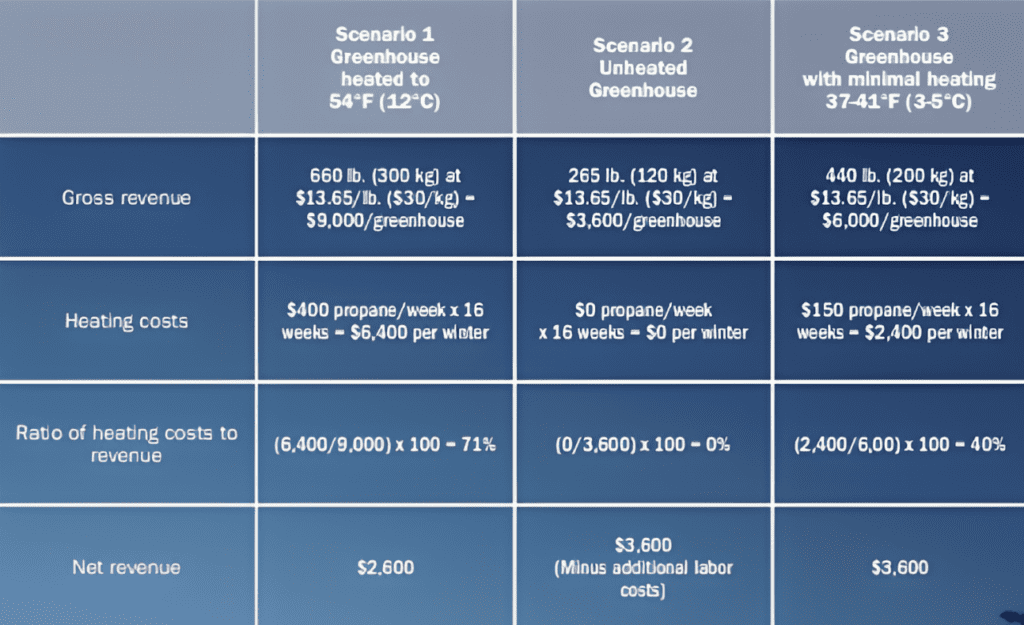Finding the Winter Greenhouse Sweet Spot
What temperature should a grower keep a greenhouse at to maximize profit — to increase shoulder season and/or winter production while minimizing heating costs? A myriad of factors obviously weigh into this equation – type and heat-retention characteristics of the greenhouse, crops being grown, availability of labor to put secondary coverings on top of crops, and of course, heating costs.
A farm in Quebec (La Ferme des Quatre Temps) ran an on-farm trial with three different greenhouses to study this question:
- Greenhouse 1: heated to 54°F in order to maximize production; this obviously requires a large amount of heating energy (propane in their case).
- Greenhouse 2: unheated greenhouse; this zeroes out propane costs but also severely reduces production and requires labor to put on secondary row covers depending on the temperature.
- Greenhouse 3: heated to 37-41°F; this scenario achieves less production than the fully heated greenhouse but eliminates the need for the labor (and hassle) of adding secondary row covers.
Scenarios and Costs/Revenue

The study determined that maintaining the greenhouse just above freezing (scenario 3) was the sweet spot. Despite production being approximately two-thirds that of the fully heated greenhouse, no additional labor was required, and crops were not lost due to freezing temperatures.
As we move into winter, we hope this study will assist you in determining the optimal balance in terms of temperature and other variables. This balance will enable you to maximize both profit and quality of life on your farm.
















